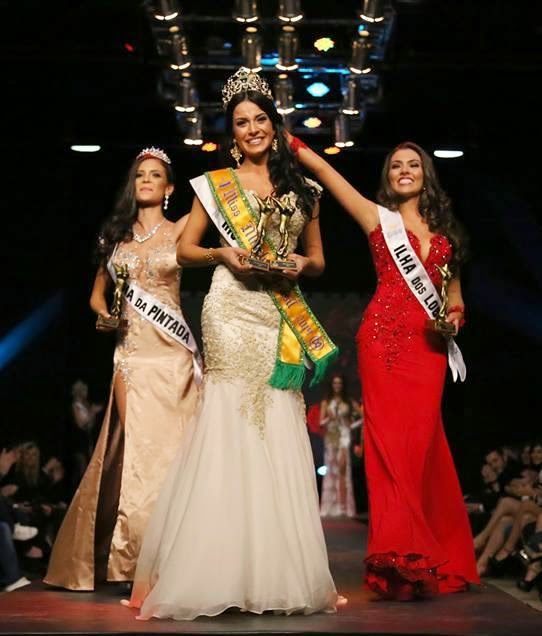
The following year Paulo Max took over the Miss Brazil organization, and after his death in 1996, his children Paulo Max Filho and Ana Paula Sang organized the competition from 1997 until 1999. Brito organized the national pageants in 19, but due to a lack of sponsorship, was forced to appoint a titleholder instead in 1993. In 1990, SBT dropped Miss Brazil from its scheduling due to the continued downturn in viewership.įollowing the withdrawal of SBT, Brito opted to leave the network and found her own company to promote Brazilian beauty pageants, called The Most of Brazilian Beauty. However, the competition did not see an uptick in support or viewership, and continued to decline in popularity. During the SBT era, Santos became known as the face of Miss Brazil, hosting the pageant every year. During this period, Marlene Brito was hired by SBT as the new national director of Miss Brazil, tasked with overseeing day-to-day operations and the preparation of contestants. Rede Tupi continued to broadcast Miss Brazil until its bankruptcy in 1980.įollowing the bankruptcy of Rede Tupi in 1980, Miss Brazil was transferred to Sistema Brasileiro de Televisão (SBT) and its owner Silvio Santos. This problem was exacerbated with the withdrawal of key sponsor Helena Rubinstein Incorporated in 1976. The competition began to experience a decrease in popularity, both in television viewers and ticket sales. įollowing the move of the competition to Brasília, Miss Brazil was faced with a number of problems in regards to viewership and sponsors. This was done for both strategic and political reasons: most connecting flights throughout Brazil stopped in Brasília, Brasília was the location of the headquarters of Diários Associados, and being the federal capital, the president of Brazil could be involved in greeting the contestants. In 1973, the organizers of Miss Brazil opted to move the pageant from Ginásio do Maracanãzinho in Rio de Janeiro, where it had traditionally been held, to Nilson Nelson Gymnasium in Brasília. At the time, the first runner-up of Miss Brazil was nominated to compete at Miss World. Lúcia Petterle also later was crowned Miss World 1971, making Brazil one of the few countries at the time to have won both of the world's two major international beauty pageants. Miss Brazil entered its golden age in the 1960s, with Iêda Maria Vargas winning Miss Universe 1963 and Martha Vasconcellos winning Miss Universe 1968, its only wins in the competition. ĭiários Associados began promoting and broadcasting the competition in 1955, which significantly increased press coverage and recognition of the competition in Brazil, turning it into the second-most watched event on Brazilian television, behind only the matches of the Brazil national football team. Catalina Swimwear, the founder and main sponsor of Miss Universe, became sponsors of the Miss Brazil competition and provided swimwear for the contestants. Following this inaugural event, Miss Brazil was held annually to elect a woman to represent Brazil at Miss Universe, becoming the first time where a national beauty pageant was held regularly in Brazil. Martha Rocha ultimately won the title, and is thus considered the first formal Miss Brazil winner. Its inaugural edition was held at the Palácio Quitandinha in Petrópolis, and used to select a Brazilian representative for Miss Universe 1954, Brazil's first time competing in Miss Universe. The Miss Brazil competition was formally created in 1954, and held annually since. Overall, evidence supports that eight women had been crowned Miss Brazil in the early years before a Miss Brazil pageant was formally created. Violeta Lima Castro, crowned Miss Brazil 1900, is sometimes considered the first Miss Brazil, although the records surrounding her being the alleged first winner are inconsistent and some records allege that a different woman was crowned as the first Miss Brazil during the time of the Empire of Brazil in 1865. Since 1900, competitions in the vein of Miss Brazil had existed sporadically throughout the country in a non-consecutive manner. History Early years and golden age (1954–1972) Martha Rocha, Miss Brazil 1954

Since 2020, the pageant has been owned by Brazilian businessman Winston Ling, while Marthina Brandt has served as its national director. The competition has gone through several incarnations throughout its history, while its main purpose has been to select the Brazilian representative for the Miss Universe pageant. Miss Brazil ( Portuguese: Miss Brasil) is a Brazilian national beauty pageant, held annually since 1954.


 0 kommentar(er)
0 kommentar(er)
